Long-term journey in winter
February 2021 / Tohoku - Hokkaido
Photographer / Yoshiteru Takahashi

I had been thinking for a long time about where to shoot this winter. There are countless places I want to shoot, such as Aso in Kyushu, Ishizuchi Mountain Range in Shikoku, and Daisen in Sanin. After much deliberation, I decided to go to Hokkaido to capture the frost. I had visited Hokkaido in the winter four years ago, but the warm winter had left me short.
This time, I had been living in self-restraint for three and a half months, so the inside of the car was in full normal mode. First, I started by setting up the car, which was surprisingly difficult. If you make a bed and pack a month's worth of clothes and various equipment, it will be quite a lot.
Next, I collected the latest information on the local area. I do this every time, but it is to check the weather and other conditions that match the image of the subject I want to shoot. The image of frost, which is the subject of this time, is frost densely attached to branches against a clear blue sky. When I checked the day before, the conditions were good, but when I checked again, the conditions had changed to the worst. Since the weather did not improve for five days, I quickly adjusted my schedule and decided to take photos in Tohoku.
The first place I visited was Lake Akimoto in Fukushima Prefecture. This is a spot I really like and I visit many times a year. The thing I was most worried about when heading to the site was the freezing of the lake surface. If it was frozen, it would just be a snowy field and not very interesting, but on this day the water surface was properly visible. If I had been greedy, I would have hoped for some mist since it was quite cold, but unfortunately the wind got stronger on the way and there was no reflection, so that was it. Since you are dealing with nature, things don't always go as you expect, but it was still a good harvest.
The next day, it was forecast to be cloudy in Urabandai, so I decided to move to Miyagi Prefecture, where it was forecast to be sunny.
This time, I had been living in self-restraint for three and a half months, so the inside of the car was in full normal mode. First, I started by setting up the car, which was surprisingly difficult. If you make a bed and pack a month's worth of clothes and various equipment, it will be quite a lot.
Next, I collected the latest information on the local area. I do this every time, but it is to check the weather and other conditions that match the image of the subject I want to shoot. The image of frost, which is the subject of this time, is frost densely attached to branches against a clear blue sky. When I checked the day before, the conditions were good, but when I checked again, the conditions had changed to the worst. Since the weather did not improve for five days, I quickly adjusted my schedule and decided to take photos in Tohoku.
The first place I visited was Lake Akimoto in Fukushima Prefecture. This is a spot I really like and I visit many times a year. The thing I was most worried about when heading to the site was the freezing of the lake surface. If it was frozen, it would just be a snowy field and not very interesting, but on this day the water surface was properly visible. If I had been greedy, I would have hoped for some mist since it was quite cold, but unfortunately the wind got stronger on the way and there was no reflection, so that was it. Since you are dealing with nature, things don't always go as you expect, but it was still a good harvest.
The next day, it was forecast to be cloudy in Urabandai, so I decided to move to Miyagi Prefecture, where it was forecast to be sunny.

Lake Akimoto, Fukushima Prefecture
FUJIFILM GFX50S / GF45-100mmF4 R LM OIS WR / F16 1/50 s ISO-100
The shoot in Miyagi Prefecture was at Izunuma, which is also a Ramsar site. It is a famous spot for taking photos of lotus flowers in summer and white-fronted geese in autumn. The reason I visited here was because I had heard that white-fronted geese were coming near the shore, but in fact, I had a strong image of "white-fronted geese" as "birds of late autumn" and had no idea how many there were in the harsh winter, so I had not been very enthusiastic about going. This time, when I actually went to the site, there were more birds than I expected, and I was able to take unexpectedly rich photos.
I felt so good that I repeated the routine of taking photos at other spots during the day and at Izunuma in the early morning for three days. All the small dots you can see in the swamp in the photo are white-fronted geese. It was a very good itinerary because I was able to remember the rhythm of taking photos before crossing over to Hokkaido.
I felt so good that I repeated the routine of taking photos at other spots during the day and at Izunuma in the early morning for three days. All the small dots you can see in the swamp in the photo are white-fronted geese. It was a very good itinerary because I was able to remember the rhythm of taking photos before crossing over to Hokkaido.
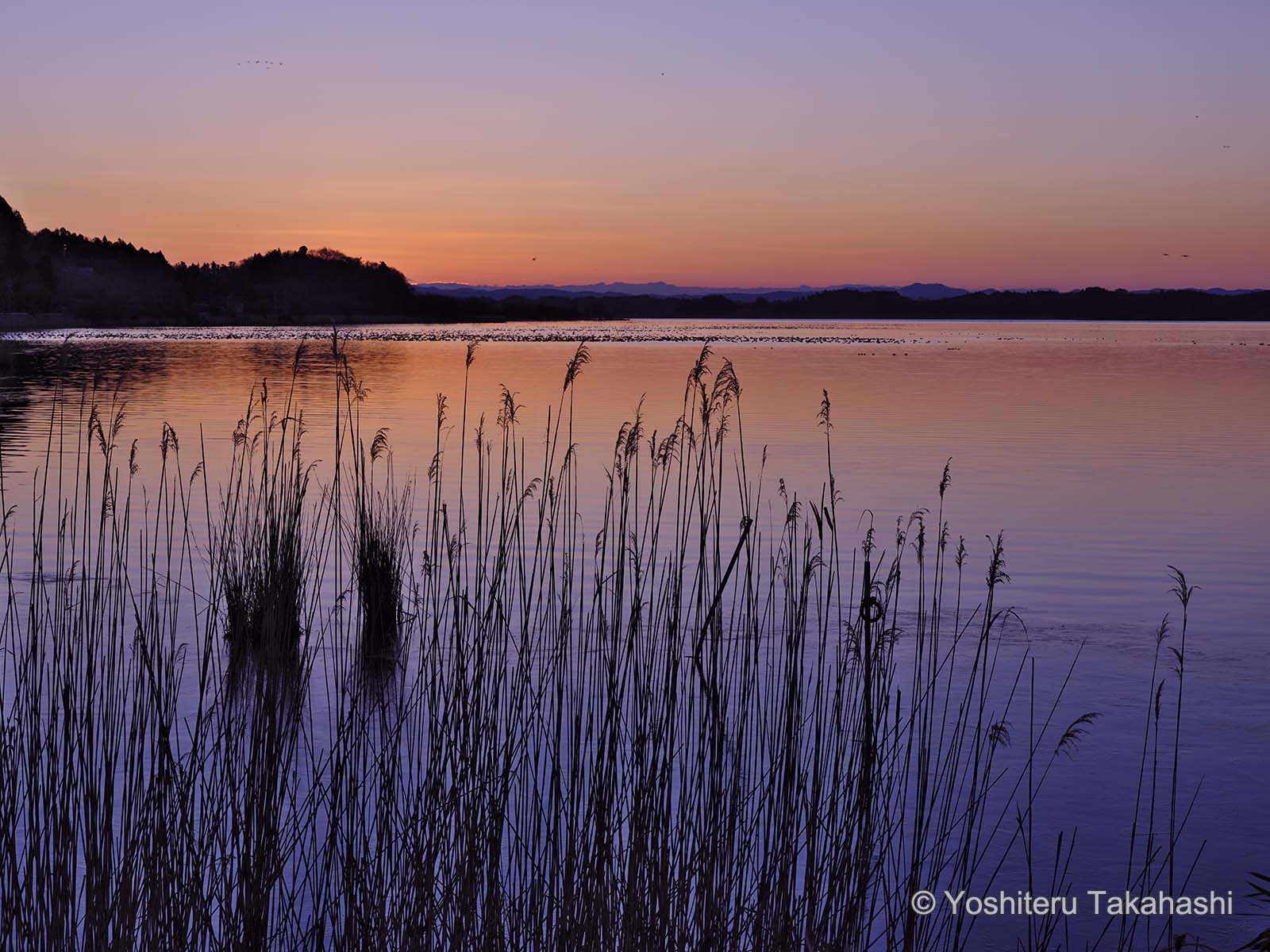
Izunuma, Miyagi Prefecture
FUJIFILM GFX50S / GF45-100mmF4 R LM OIS WR / F14 1/30 s ISO-125
After a 16-hour ferry ride from Sendai, we landed in Tomakomai at 11am. It takes five hours by car from here to the first shooting point, the Kushiro Marsh. The shooting will take place the next morning, but I wanted to check the site beforehand, so I hurried to the site.
The first thing I checked after arriving was the growth of the trees. It's been four years since I last saw them, so the trees may have grown and become unsuitable for shooting. When I actually checked, I found that, as I had worried, the branches were in the way and I couldn't get the composition I was aiming for. The next morning, of course, I shot at a different point. The temperature was minus 20 degrees. There was less frost than I had expected, but the slanting light coming in from the mountains allowed me to take some interesting pictures.
The first thing I checked after arriving was the growth of the trees. It's been four years since I last saw them, so the trees may have grown and become unsuitable for shooting. When I actually checked, I found that, as I had worried, the branches were in the way and I couldn't get the composition I was aiming for. The next morning, of course, I shot at a different point. The temperature was minus 20 degrees. There was less frost than I had expected, but the slanting light coming in from the mountains allowed me to take some interesting pictures.
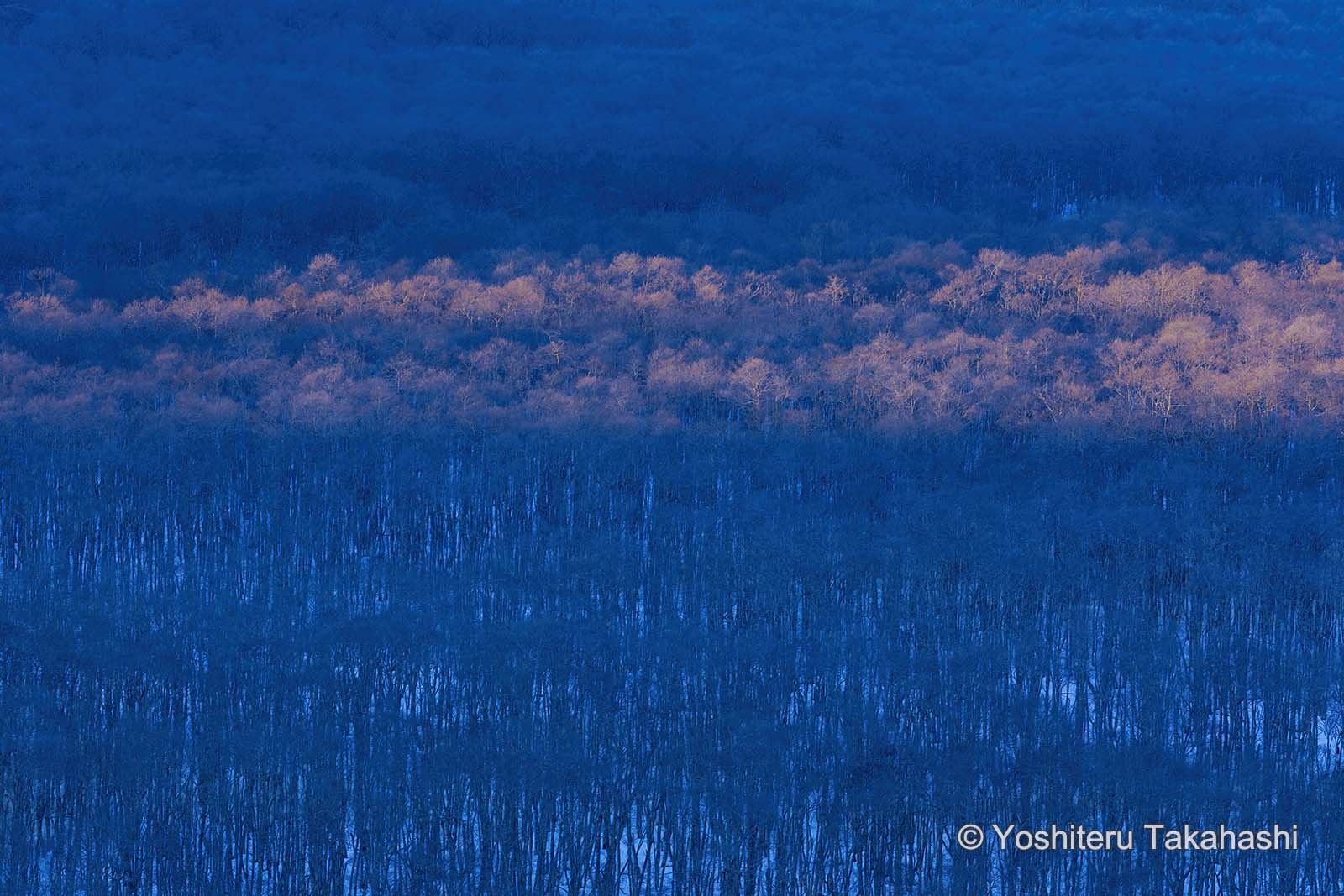
Kushiro Marsh, Hokkaido
Canon EOS 5D Mark IV / EF100-400mm f/4.5-5.6L IS II USM / F14 1/25 s ISO-250
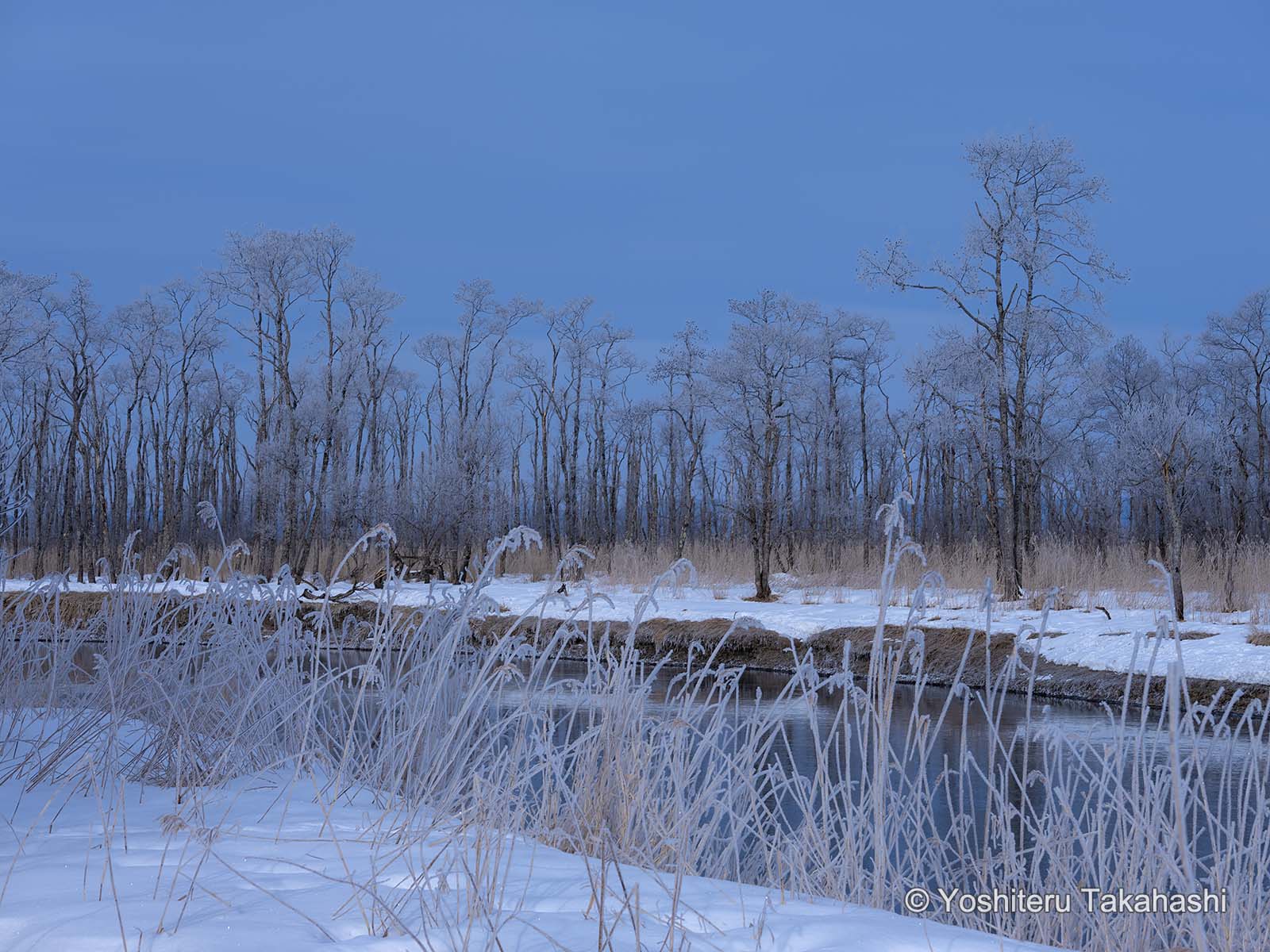
Kushiro Marsh, Hokkaido
FUJIFILM GFX50S / GF100-200mmF5.6 R LM OIS WR / F14 1/250 s ISO-200
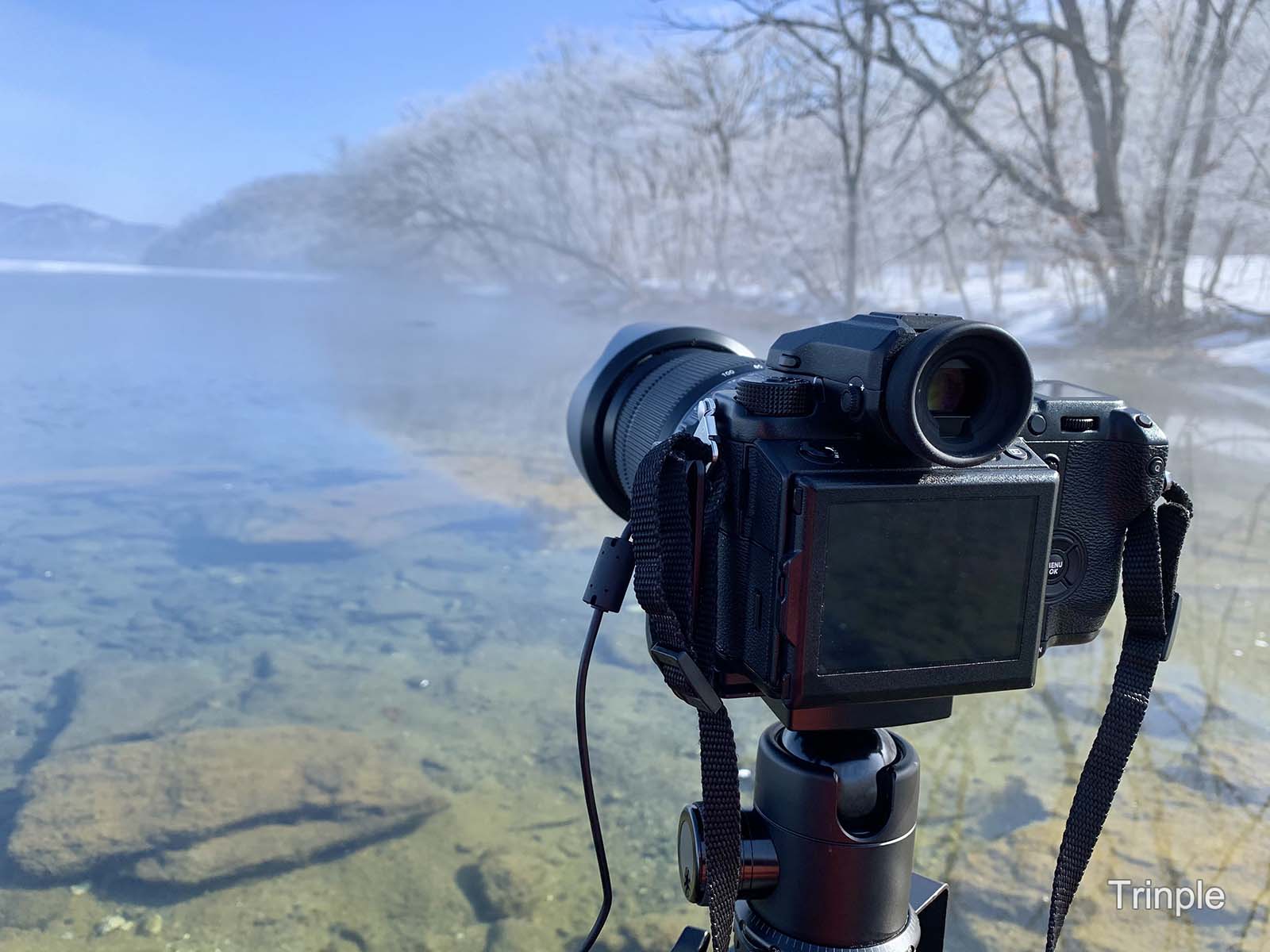
This was my first time using the Fujifilm GFX50S, and I was able to shoot comfortably using the Markins PV-100 + LV-170 universal L-plate set. The quick shoe is extremely useful in cold weather.

Tokachi Mountain, Hokkaido
Canon EOS 5D Mark IV / EF100-400mm f/4.5-5.6L IS II USM / F13 1/800 s ISO-200
After that, I spent about a month photographing in the eastern Hokkaido and Tokachi regions before heading home. I've done this kind of interview countless times, but to be honest, it's not an easy job. As I get older, it gets tougher physically.
But even so, my heart is filled with each encounter with different nature, and I'm already thinking about my next photoshoot. I'm looking forward to new encounters.
But even so, my heart is filled with each encounter with different nature, and I'm already thinking about my next photoshoot. I'm looking forward to new encounters.
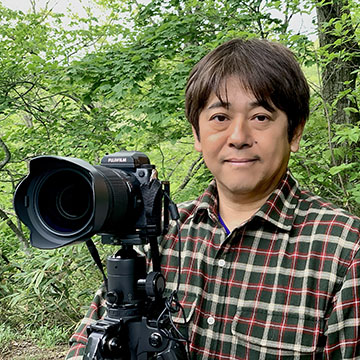
Yoshiteru Takahashi
Born in Chiba Prefecture in 1965.
At the age of 16, became fascinated by the red-crowned cranes encountered on a trip to the Kushiro Marshlands and began taking photographs. Has been capturing the changing nature of the seasons and the wildlife in various places in Japan and abroad. Work has been featured on numerous calendars, posters, and magazine covers.
At the age of 16, became fascinated by the red-crowned cranes encountered on a trip to the Kushiro Marshlands and began taking photographs. Has been capturing the changing nature of the seasons and the wildlife in various places in Japan and abroad. Work has been featured on numerous calendars, posters, and magazine covers.
Member of the Japan Landscape Photographers Association
URL : teru-photo.com








